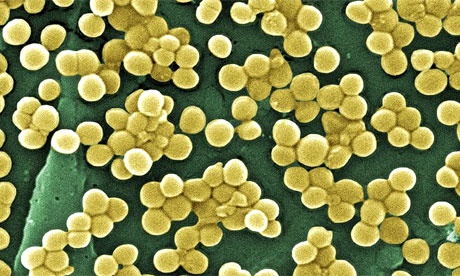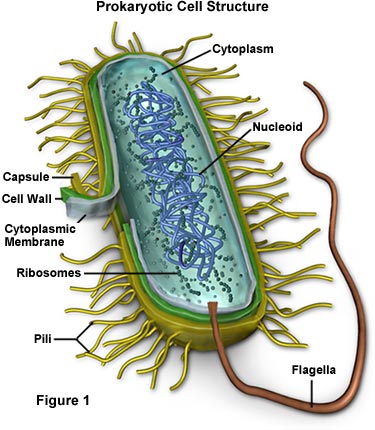The Intriguing Universe of Bacteria Part 2:
Revenge of the Superbugs
Welcome back to the SUPERTIFIC WAFFLE.
Oh, am I getting it wrong again?
Sorry, sorry, be back in a moment.
TAKE 2
Hello again, and welcome back to LE SCI-
Really?!
I thought I had it perfect!
That's someone else's blog?
Ohhhhhh.
*Murmurs something inaudible.
Got it.
TAKE 3
Hello, and welcome back to THE SCIENTIFIC WAFFLE!
Today we'll be learning about bacteria: and the newest news in the ongoing war with the bacteria kind.
Bacteria can be very helpful. We use them in food products, such as cheese and bread. They also turn nitrogen into something plants can use, instead of something that harms them. They even turned the world into the oxygen-filled paradise that we live in today!
But, as with all things in life, the bad comes with the good. And today we will be talking about the bad side of bacteria.
 Fact: The bacteria in milk, which are used to make cheese and yogurt, are taken out by the process of pasteurization, which involves heating the milk.
Fact: The bacteria in milk, which are used to make cheese and yogurt, are taken out by the process of pasteurization, which involves heating the milk.
 Bacteria have a bad side though. They kill many, many people each year with their deadly sicknesses. They can cause diseases like tuberculosis, strep throat, and pneumonia.
Bacteria have a bad side though. They kill many, many people each year with their deadly sicknesses. They can cause diseases like tuberculosis, strep throat, and pneumonia.
 Antibiotics are prescribed medicines that kill or disable bacteria. Overuse of these is causing problems. See, bacteria reproduce extremely fast, so they can evolve fast too. Genetic mutations, or slight differences in the genetic code, are common. These can occasionally result in a bacteria becoming resistant to certain antibiotic. When these reproduce more and more, the bacteria get stronger and stronger, until superbugs are made. These can't be killed by most antibiotics, and are incredibly strong.
Antibiotics are prescribed medicines that kill or disable bacteria. Overuse of these is causing problems. See, bacteria reproduce extremely fast, so they can evolve fast too. Genetic mutations, or slight differences in the genetic code, are common. These can occasionally result in a bacteria becoming resistant to certain antibiotic. When these reproduce more and more, the bacteria get stronger and stronger, until superbugs are made. These can't be killed by most antibiotics, and are incredibly strong.
Well, that's all for today, see you later at the SCIENTIFIC WAFFLE!
Links:
Frowny Face Picture
Milk Carton Picture
Red Bacteria Picture
Superbug (MRSA) Picture
The Intriguing Universe of Bacteria
 Hello again, and welcome back. Today I'm going to be serious (well, probably). It's finally time to talk about the last of the six kingdoms, archaebacteria and eubacteria.
To see how this all started, we need to TIME TRAVEL back to the past.
Hello again, and welcome back. Today I'm going to be serious (well, probably). It's finally time to talk about the last of the six kingdoms, archaebacteria and eubacteria.
To see how this all started, we need to TIME TRAVEL back to the past.
 Now that we're here, lets talk about the six kingdoms. In the beginning, this guy named Carlos Linnaeus. He created the first version of the kingdom classification system. He divided all forms of life into animals and plants. Now lets dive deeper into THE INTRIGUING UNIVERSE OF BACTERIA. To see what changed Linnaeus's system, lets use our shrink ray and dive deep into the society of bacteria!
So, the first change that occurred in Linnaeus's system was when scientists found out about fungi. They looked at some mushrooms close up, and realized that they didn't make their own food.
Next are the protists and monera kingdoms. Scientists eventually discovered microscopic life forms and made the protist and monera kingdoms.
Finally, the monera kingdom was split into two different kingdoms, eubacteria and archaebacteria. They are both prokaryotic, meaning they have no nucleus, or a clump of genetic material bound by a membrane. Bacteria have a substitute called a nucleoid, which is a bunch of loose genetic material.
Now that we're here, lets talk about the six kingdoms. In the beginning, this guy named Carlos Linnaeus. He created the first version of the kingdom classification system. He divided all forms of life into animals and plants. Now lets dive deeper into THE INTRIGUING UNIVERSE OF BACTERIA. To see what changed Linnaeus's system, lets use our shrink ray and dive deep into the society of bacteria!
So, the first change that occurred in Linnaeus's system was when scientists found out about fungi. They looked at some mushrooms close up, and realized that they didn't make their own food.
Next are the protists and monera kingdoms. Scientists eventually discovered microscopic life forms and made the protist and monera kingdoms.
Finally, the monera kingdom was split into two different kingdoms, eubacteria and archaebacteria. They are both prokaryotic, meaning they have no nucleus, or a clump of genetic material bound by a membrane. Bacteria have a substitute called a nucleoid, which is a bunch of loose genetic material.
 Fact: They reproduce by fission, where one cell splits into two identical ones.
Bacteria also have no organelles, except for ribosomes, which fuel the cell with protein. Oh, and bacteria are unicellular as well, meaning they consist of one cell each.
Fact: They reproduce by fission, where one cell splits into two identical ones.
Bacteria also have no organelles, except for ribosomes, which fuel the cell with protein. Oh, and bacteria are unicellular as well, meaning they consist of one cell each.
 These amazing creatures have a cell wall, just like plants, but it doesn't help keep things in and out, it is only for structure. The cell is protected by the capsule and plasma membrane, on the outside of the cell. The cell is also covered in tiny, hairlike structures for moving around called pili, as well as a whip-like tail called a flagellum.
There is also only one major difference between the two types of bacteria. They have different chemical balances, so archea can live in extreme environments.
So now it's time to grow big again. 3... 2... 1... WAIT! I forgot, one more thing. Archaebacteria cannot breathe oxygen! Okay, 3... 2... 1... THE END
If you liked this post, feel free to leave a comment or follow my account. See ya later!
These amazing creatures have a cell wall, just like plants, but it doesn't help keep things in and out, it is only for structure. The cell is protected by the capsule and plasma membrane, on the outside of the cell. The cell is also covered in tiny, hairlike structures for moving around called pili, as well as a whip-like tail called a flagellum.
There is also only one major difference between the two types of bacteria. They have different chemical balances, so archea can live in extreme environments.
So now it's time to grow big again. 3... 2... 1... WAIT! I forgot, one more thing. Archaebacteria cannot breathe oxygen! Okay, 3... 2... 1... THE END
If you liked this post, feel free to leave a comment or follow my account. See ya later!
Links:
Fission Pic
Bacterial Cell Pic
Flagella Pic
Time Machine Gif (T.A.R.D.I.S.)
Brainpop







